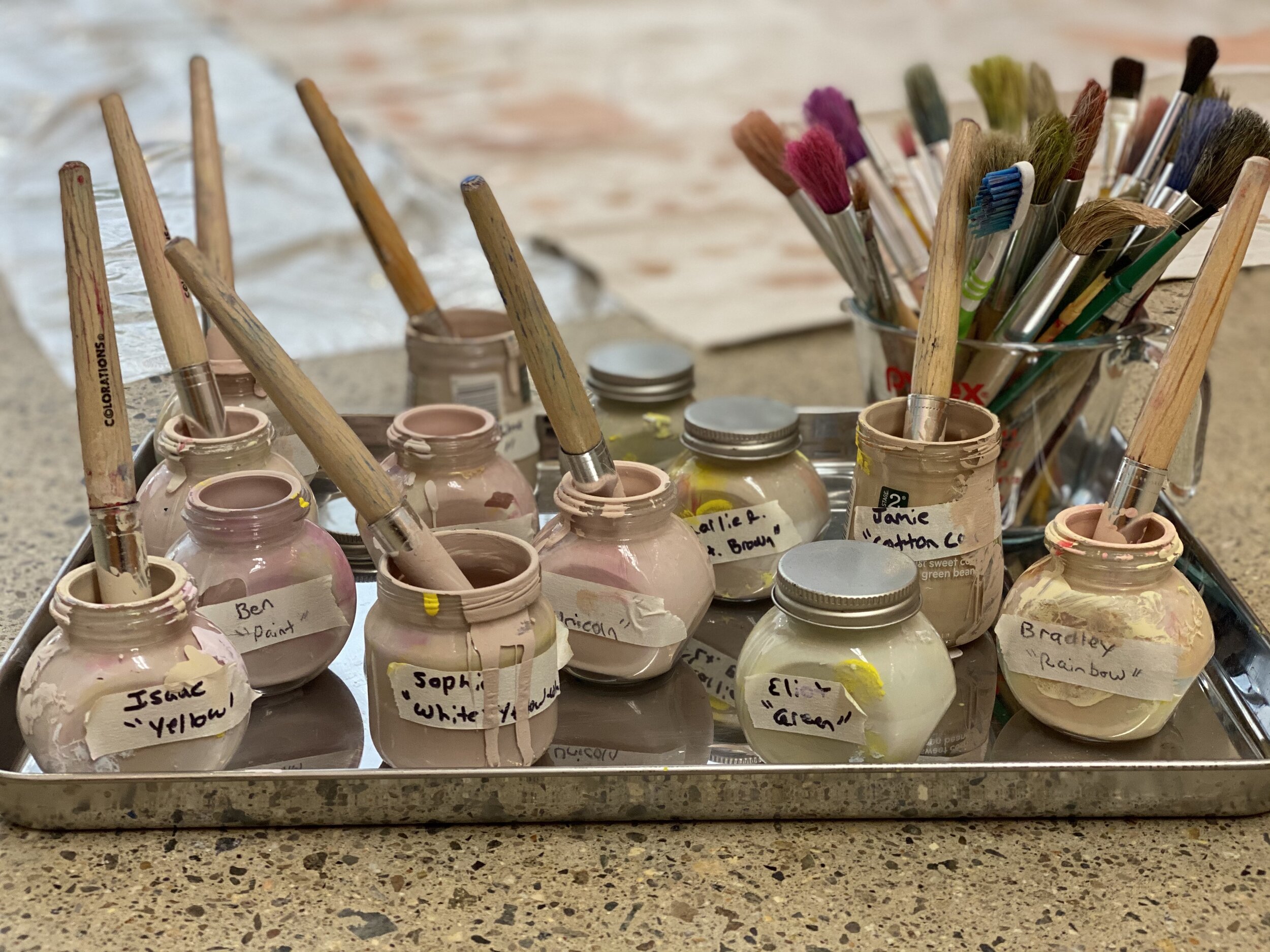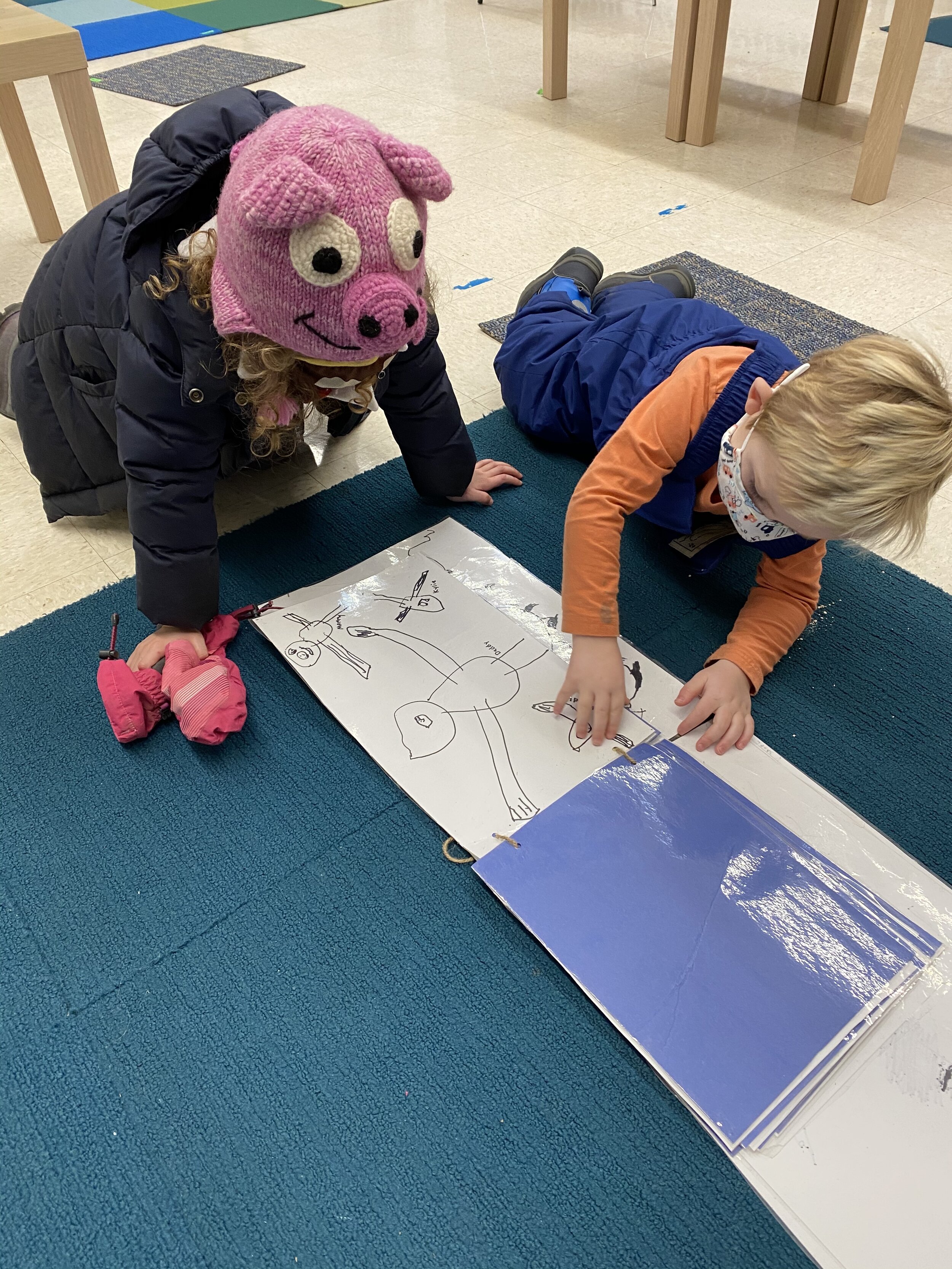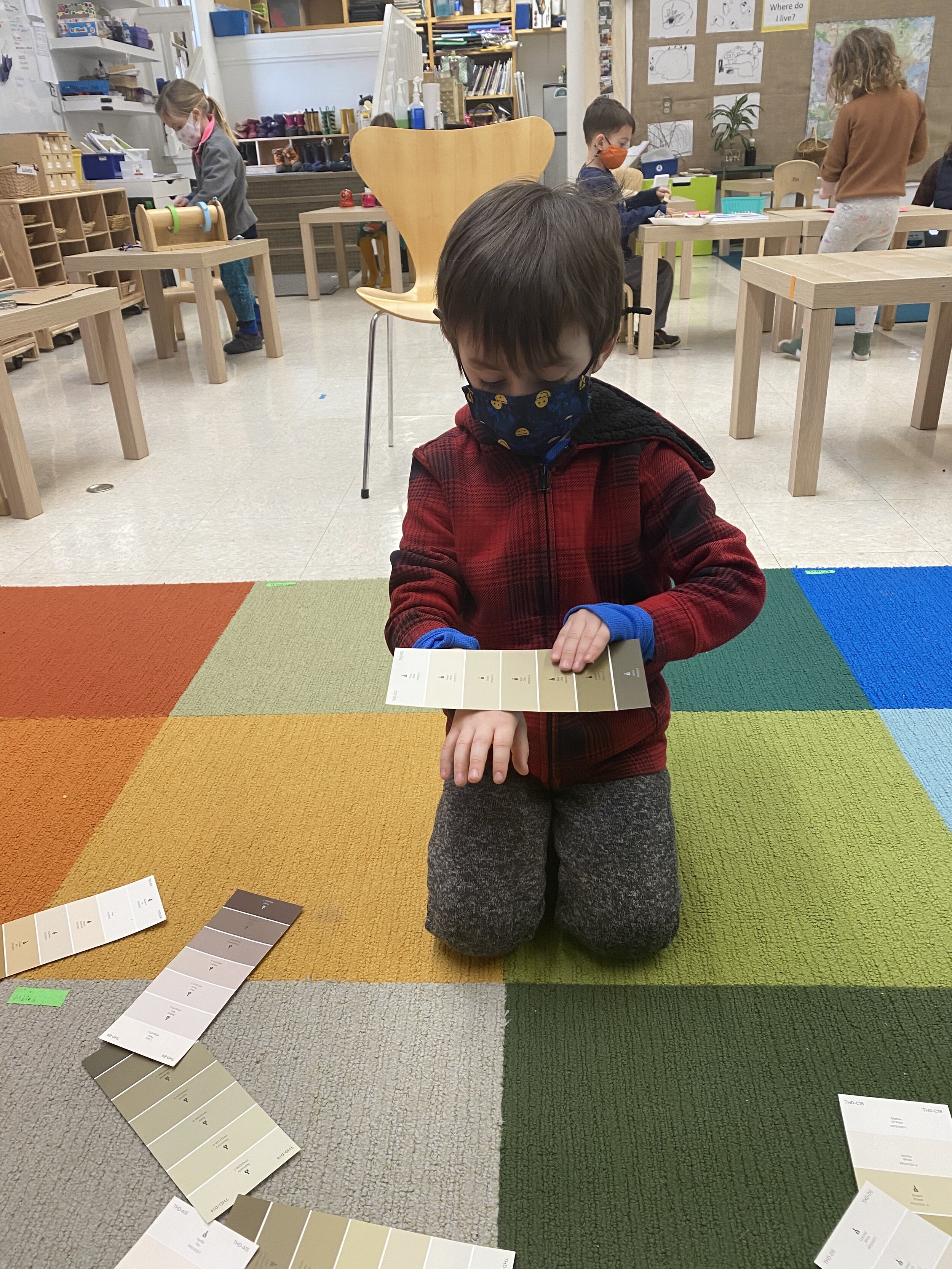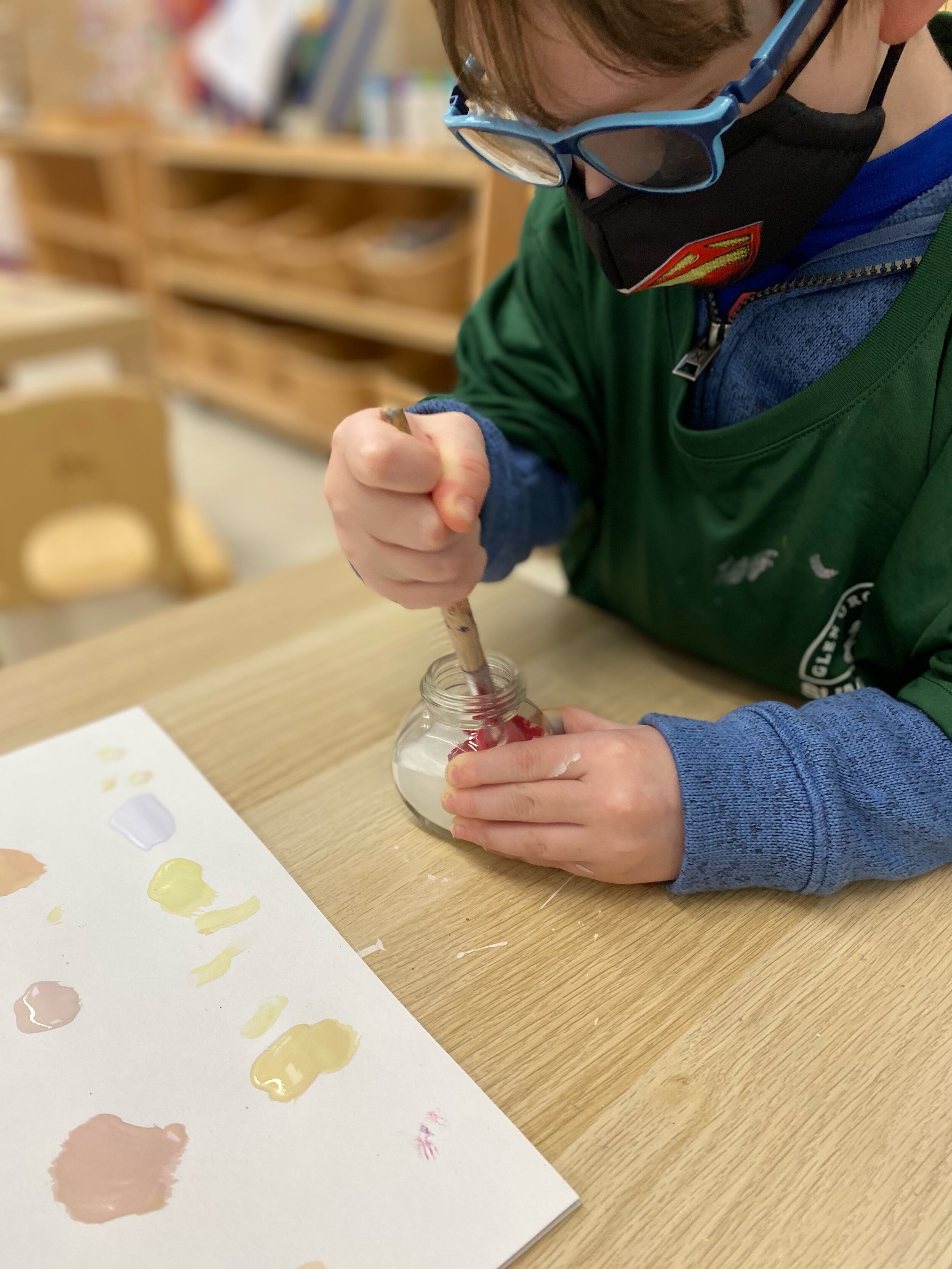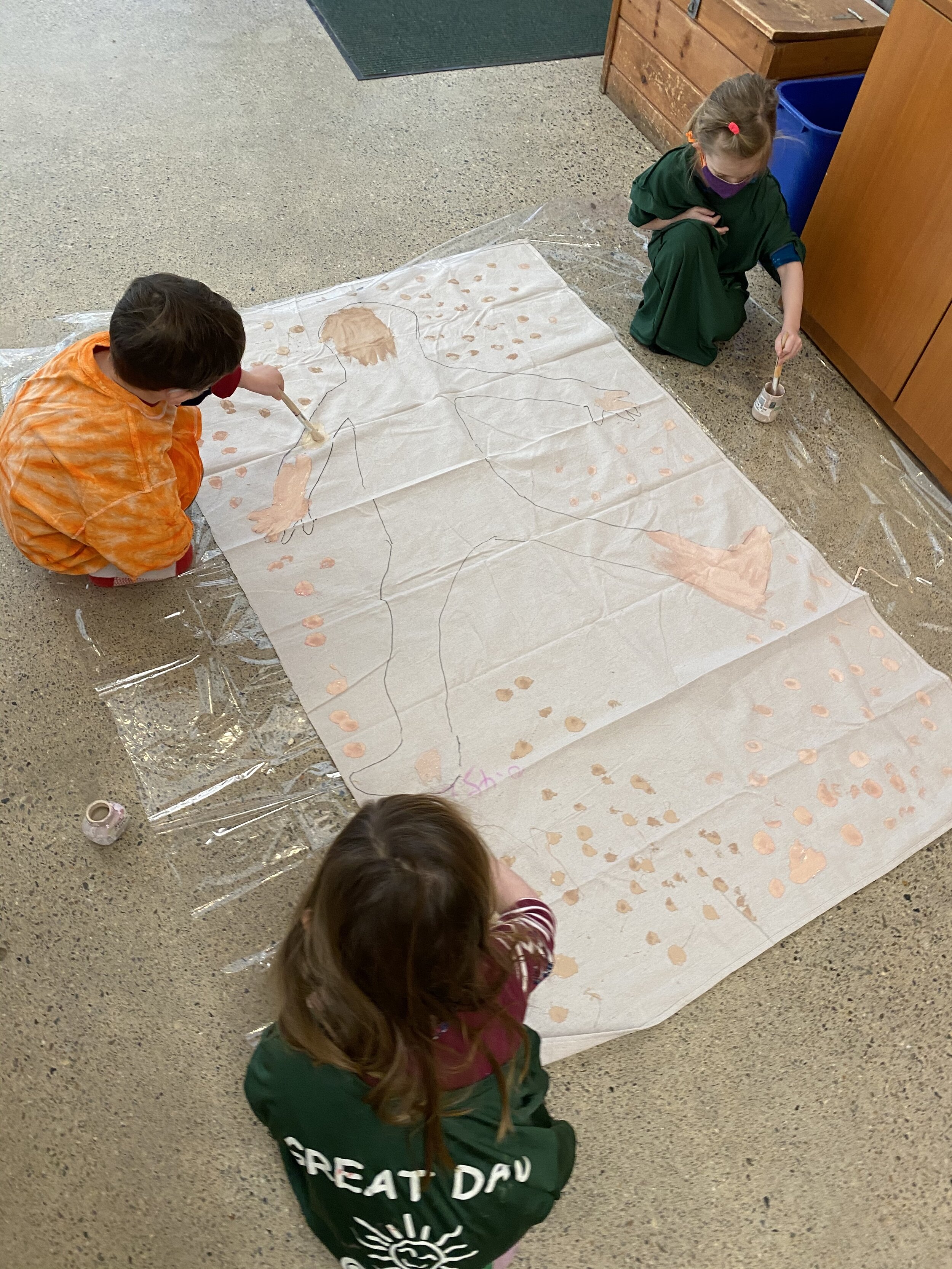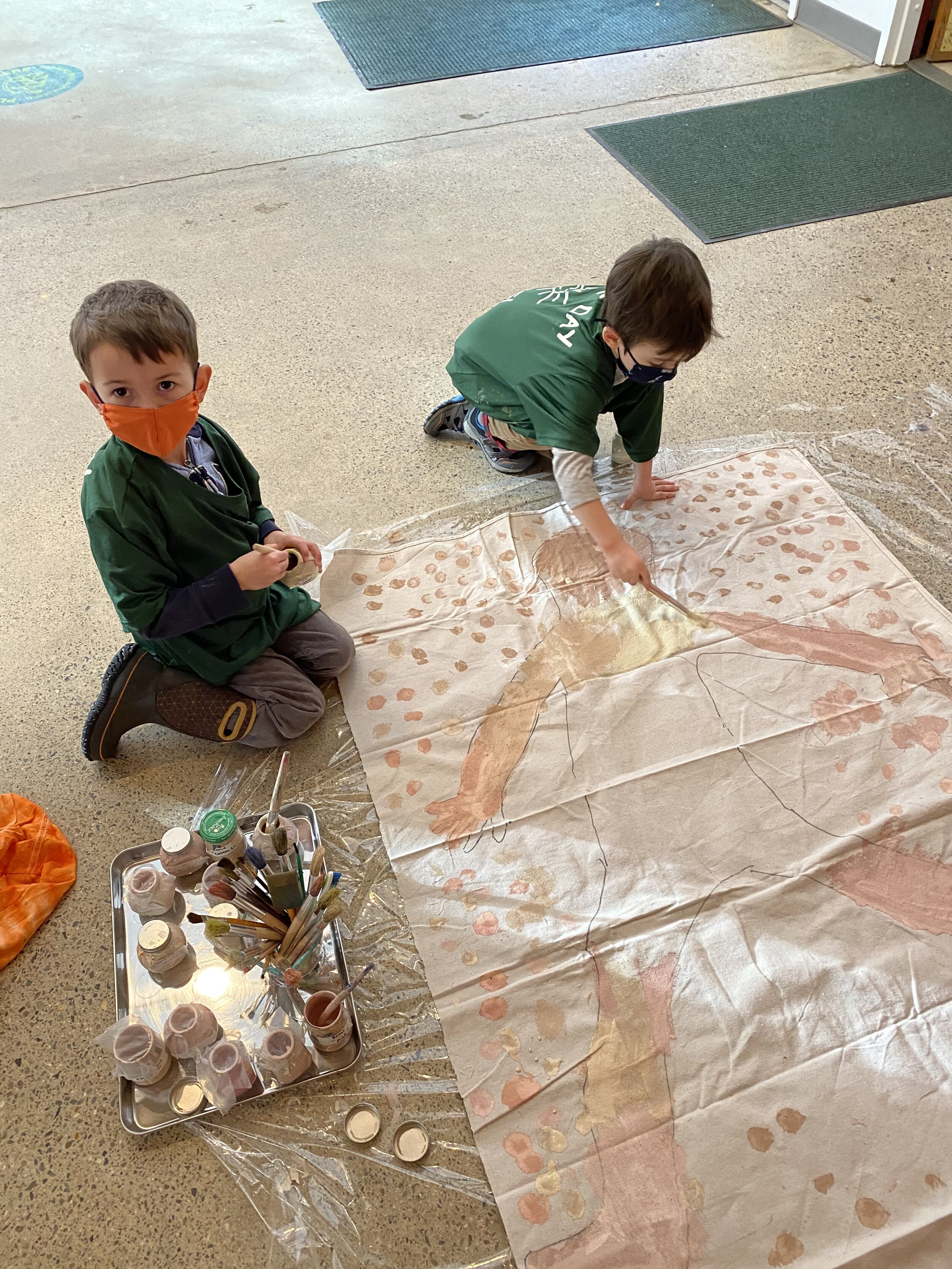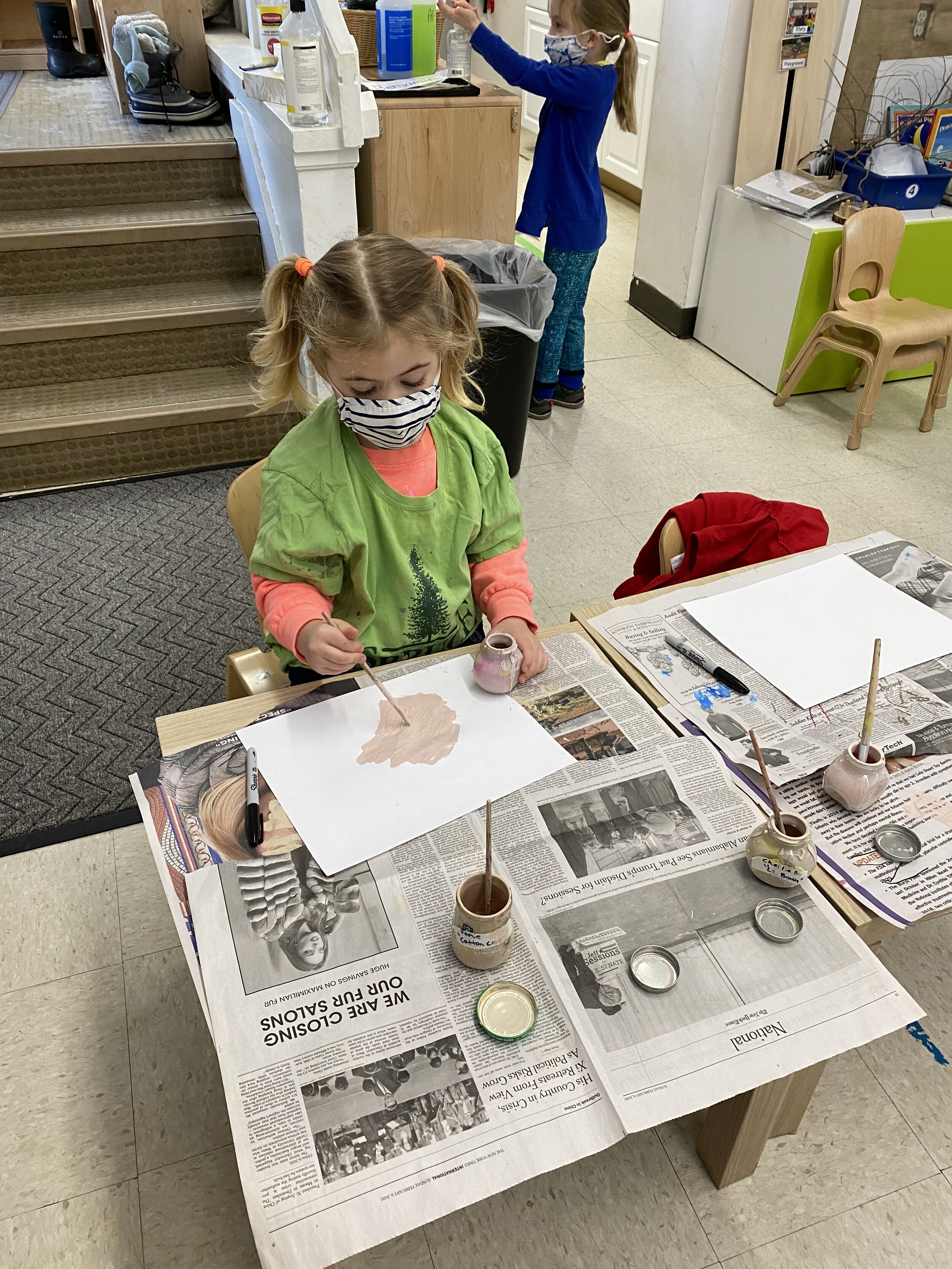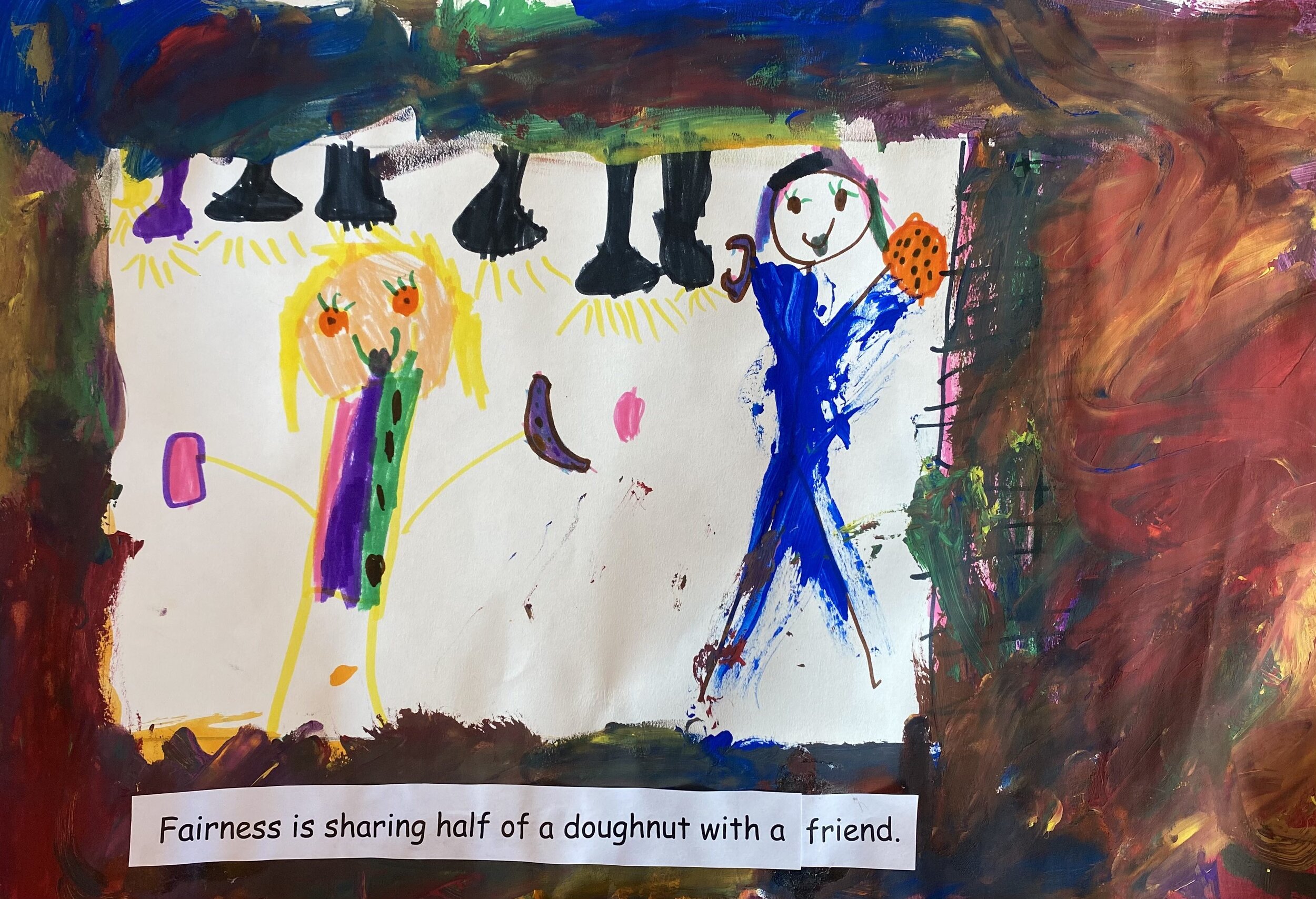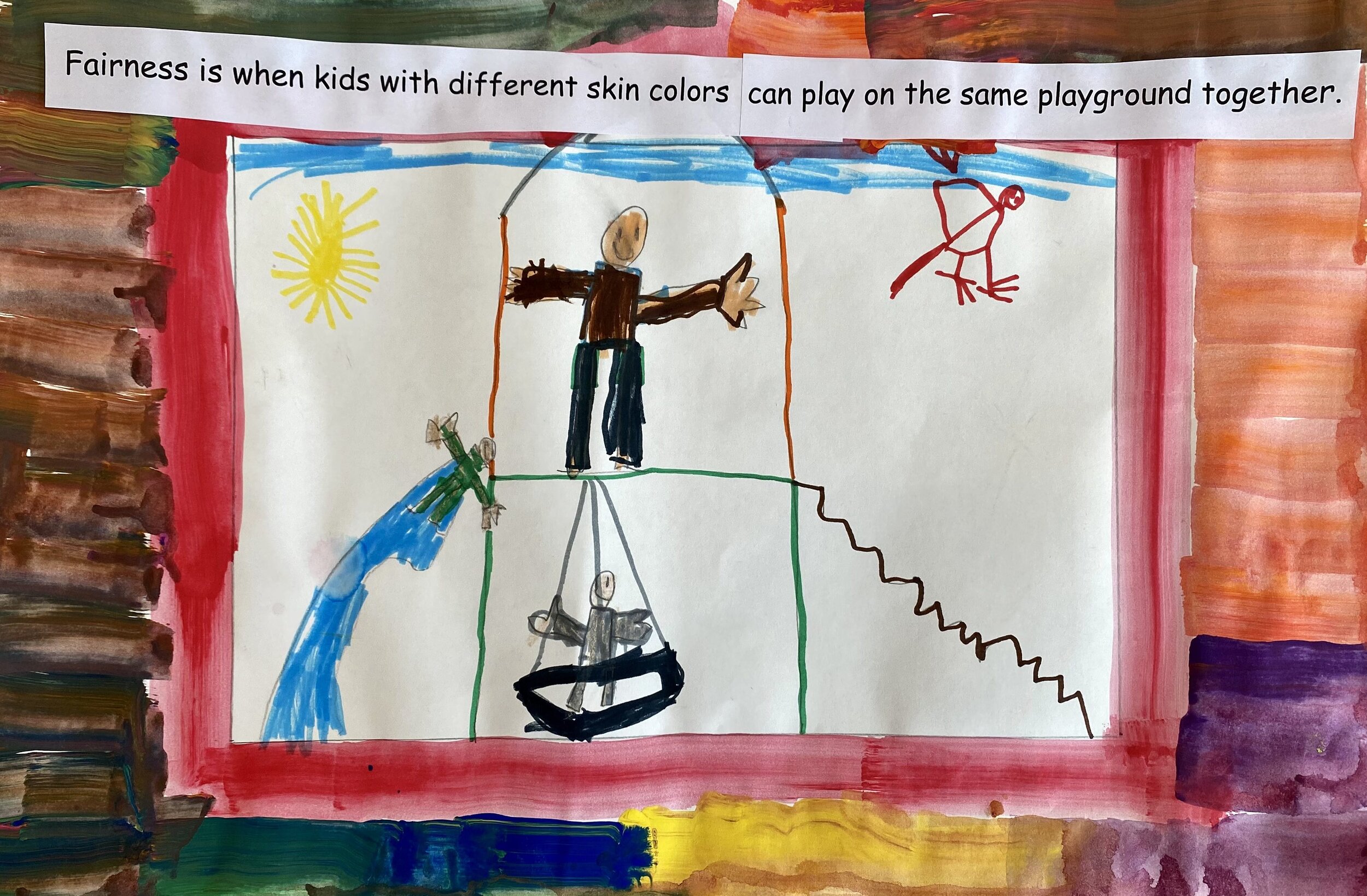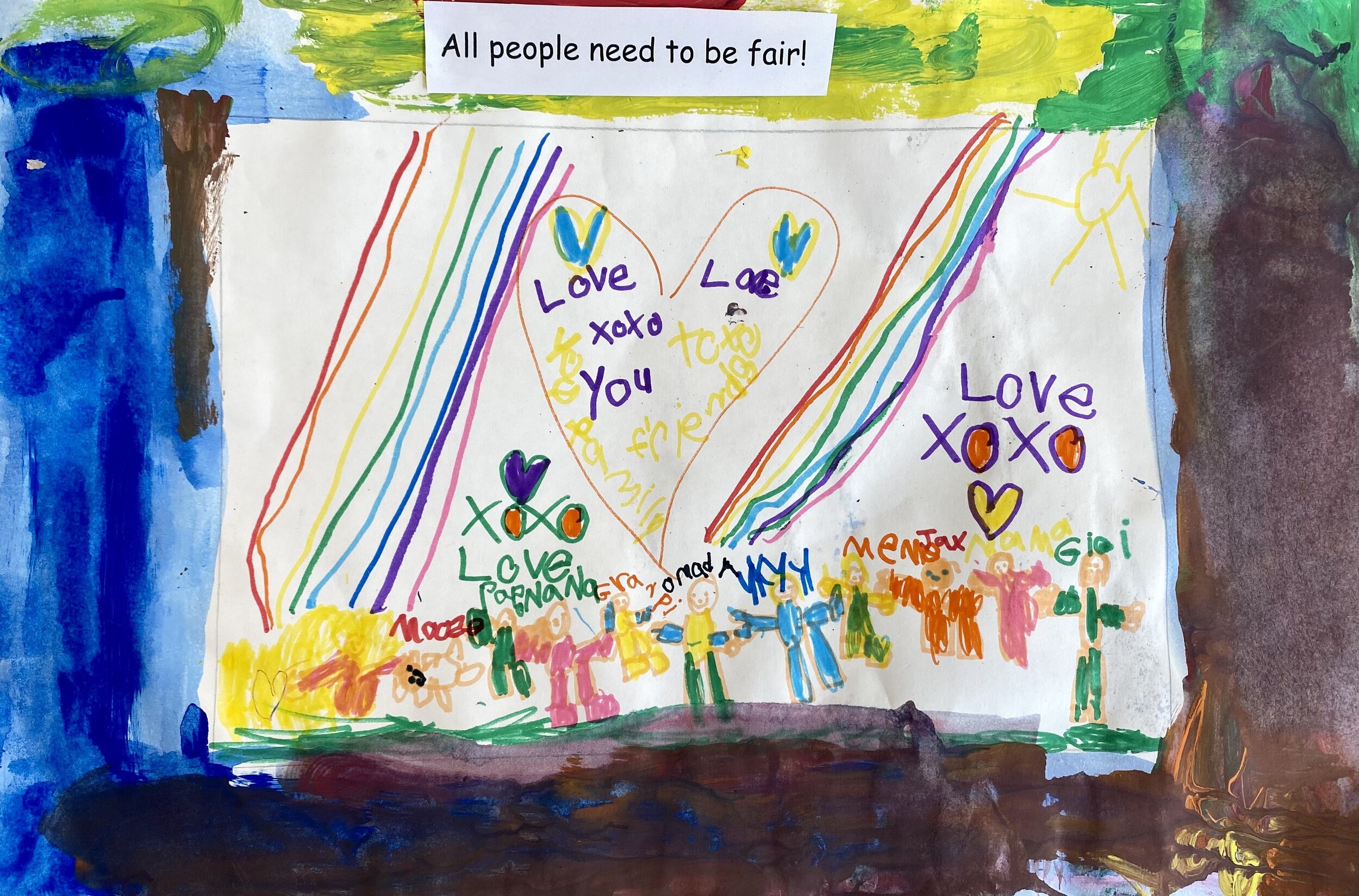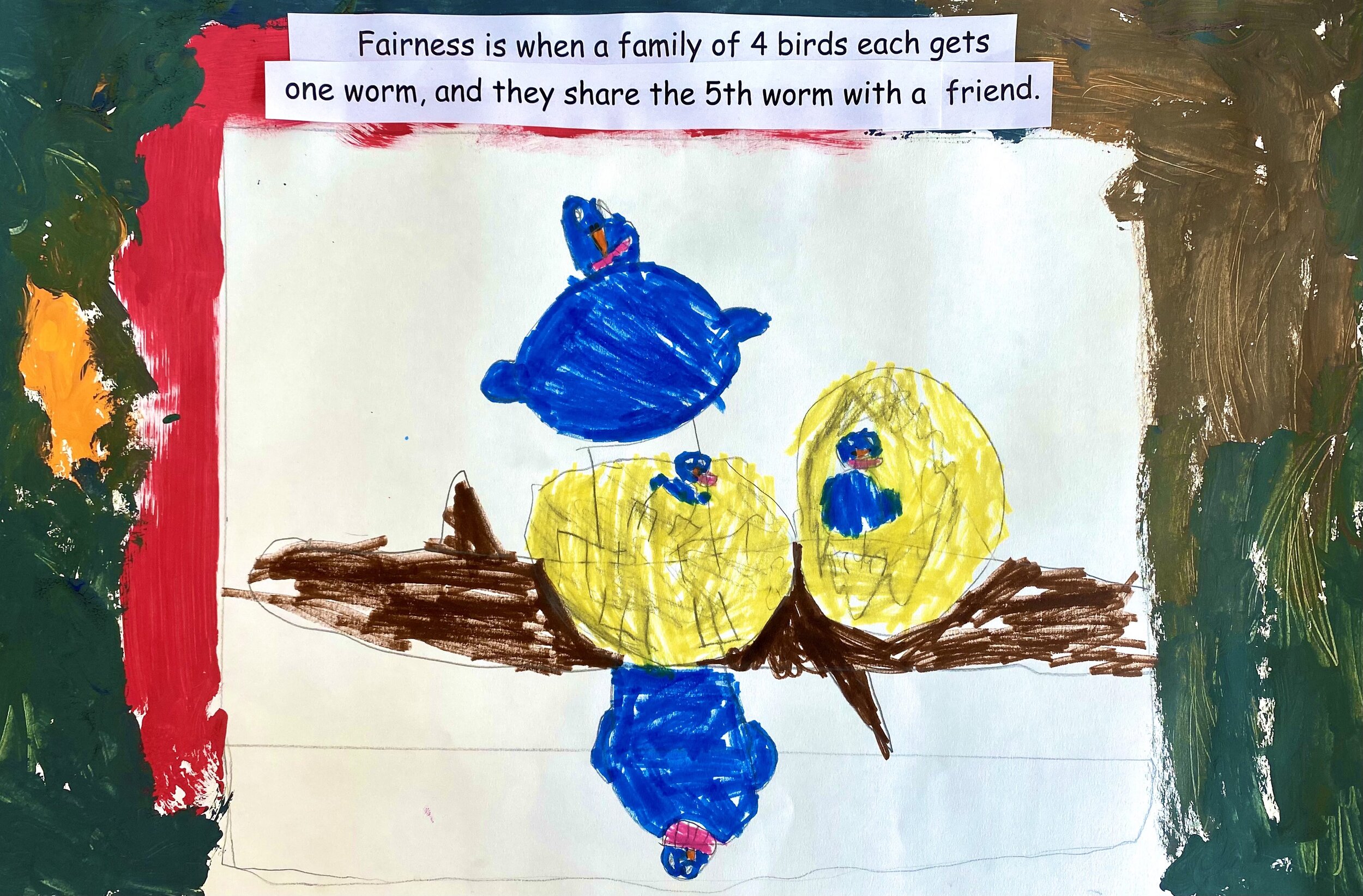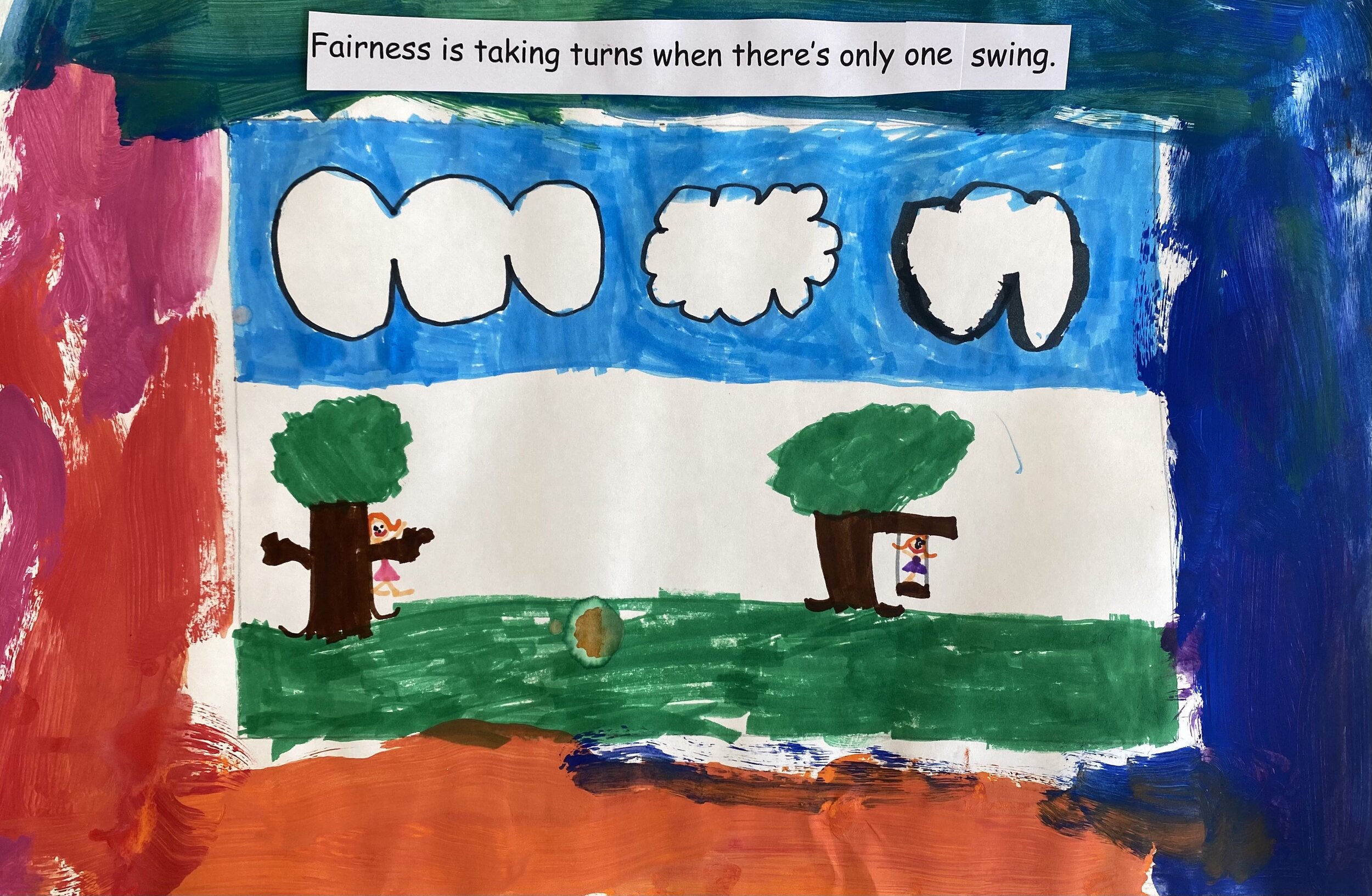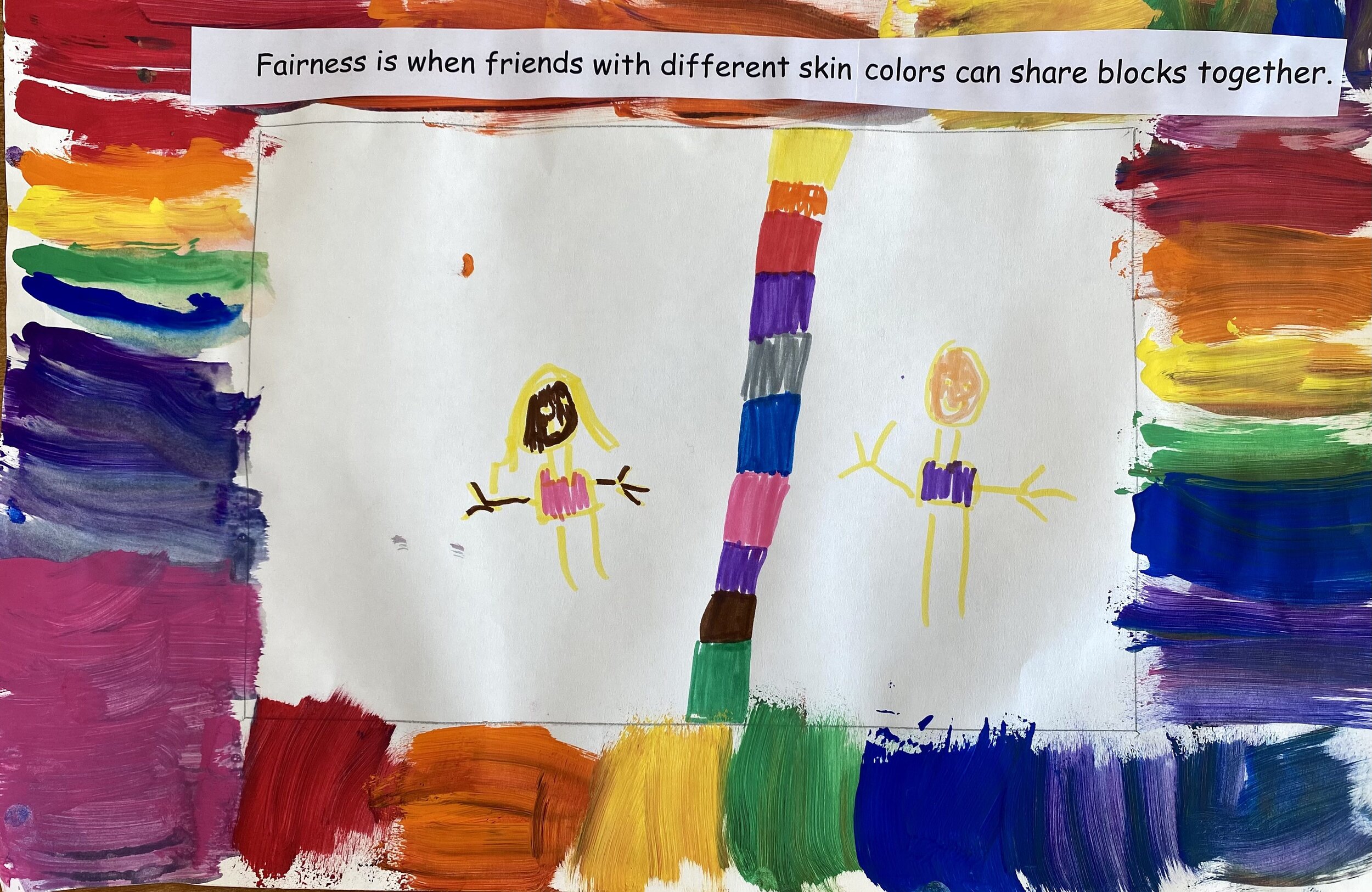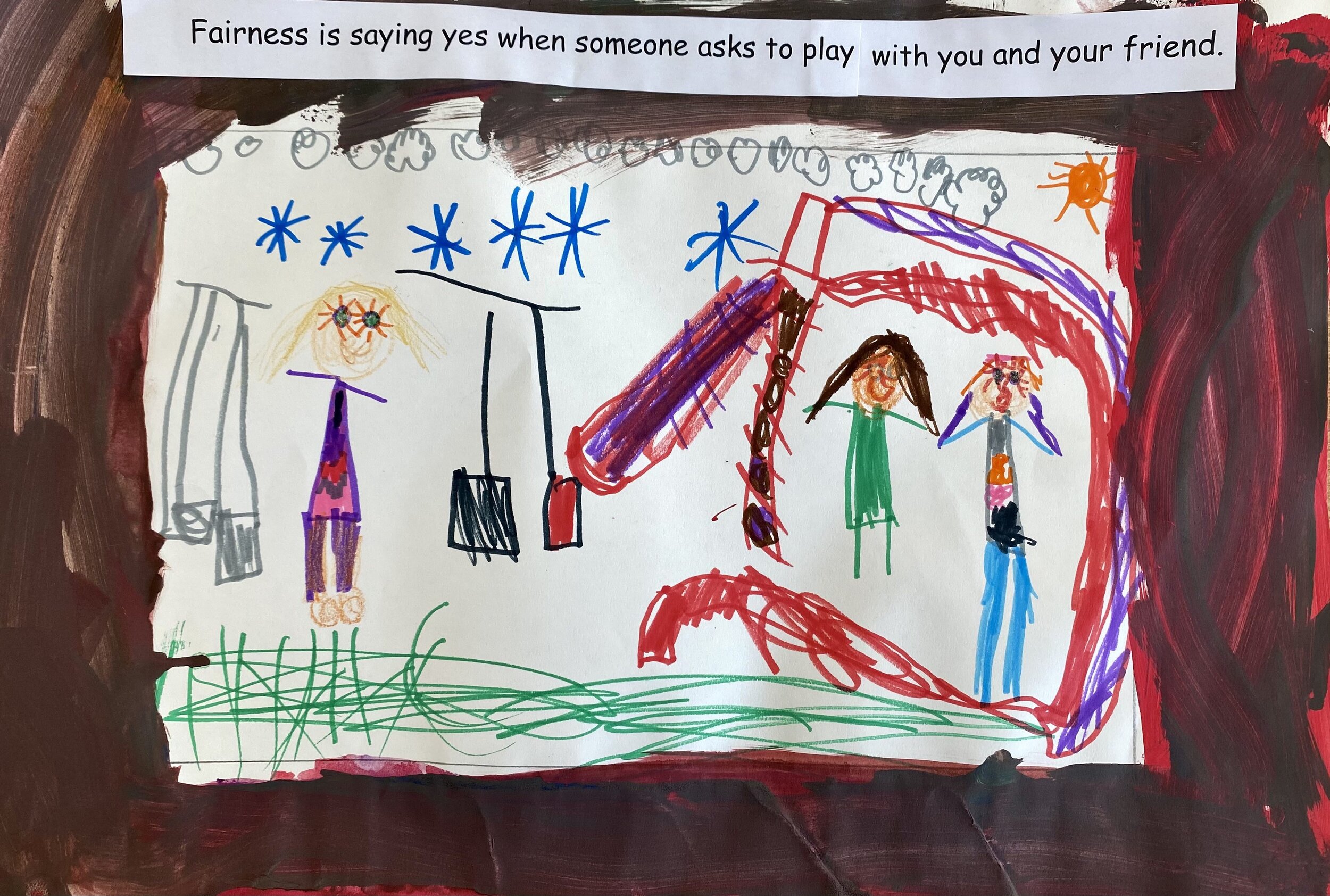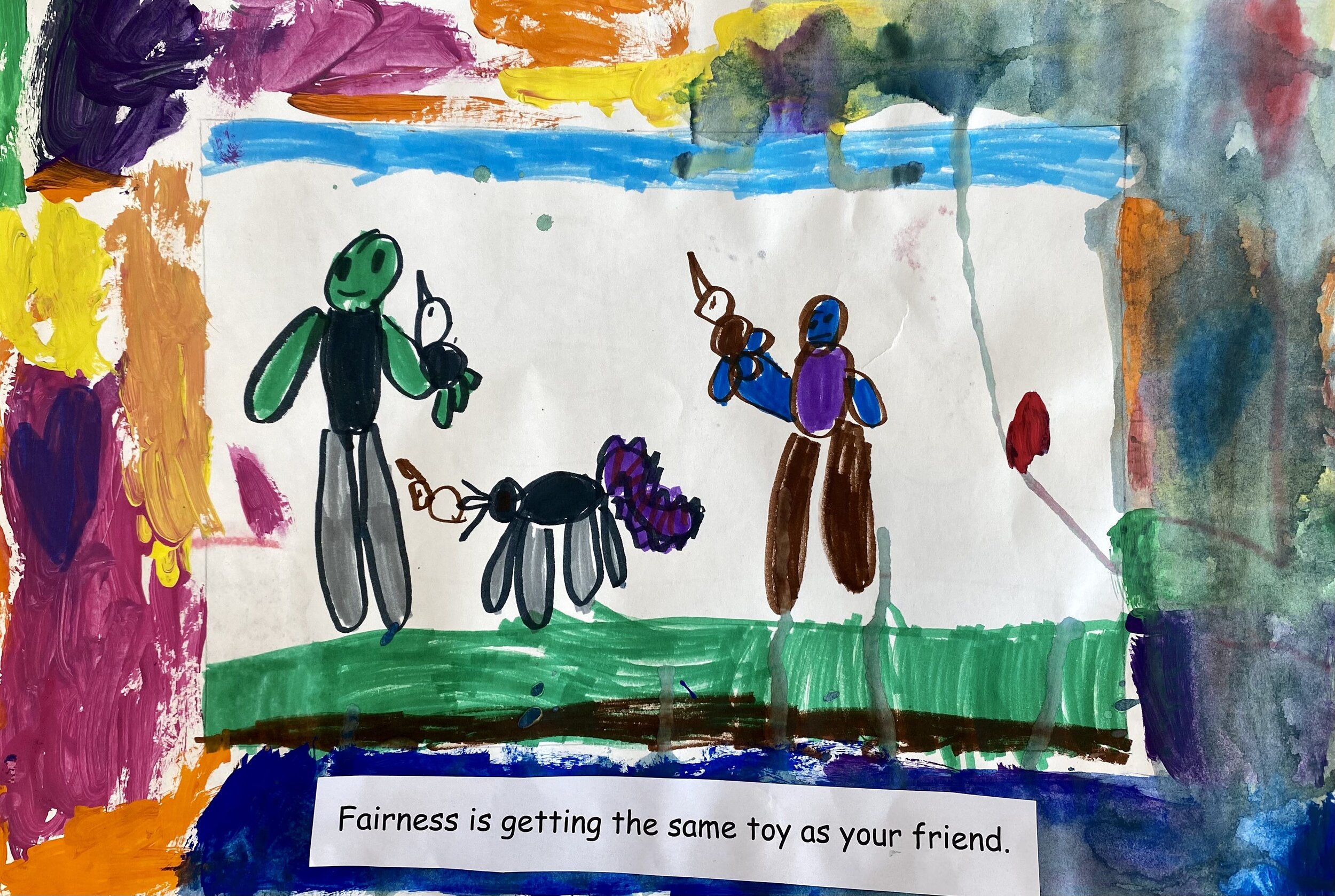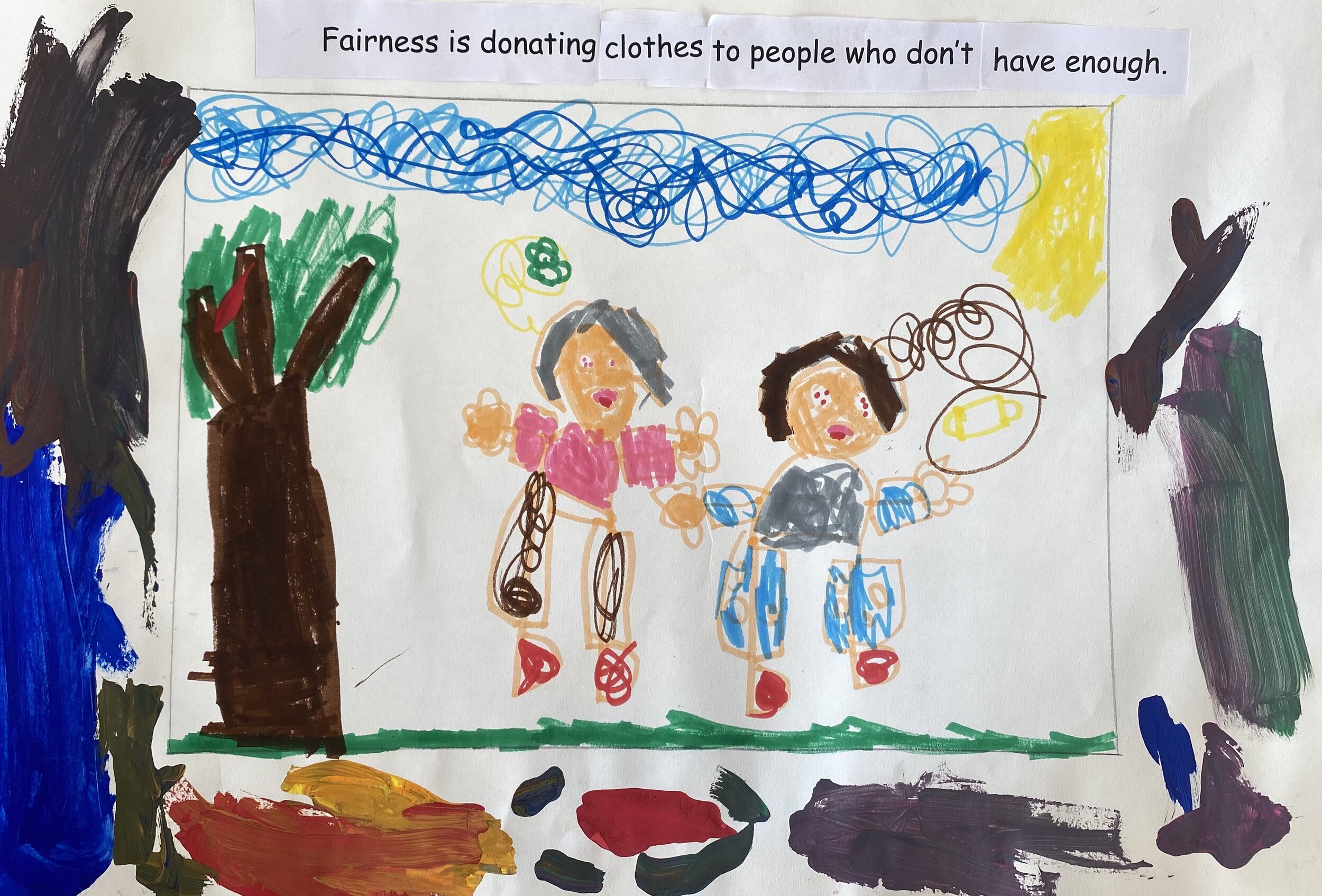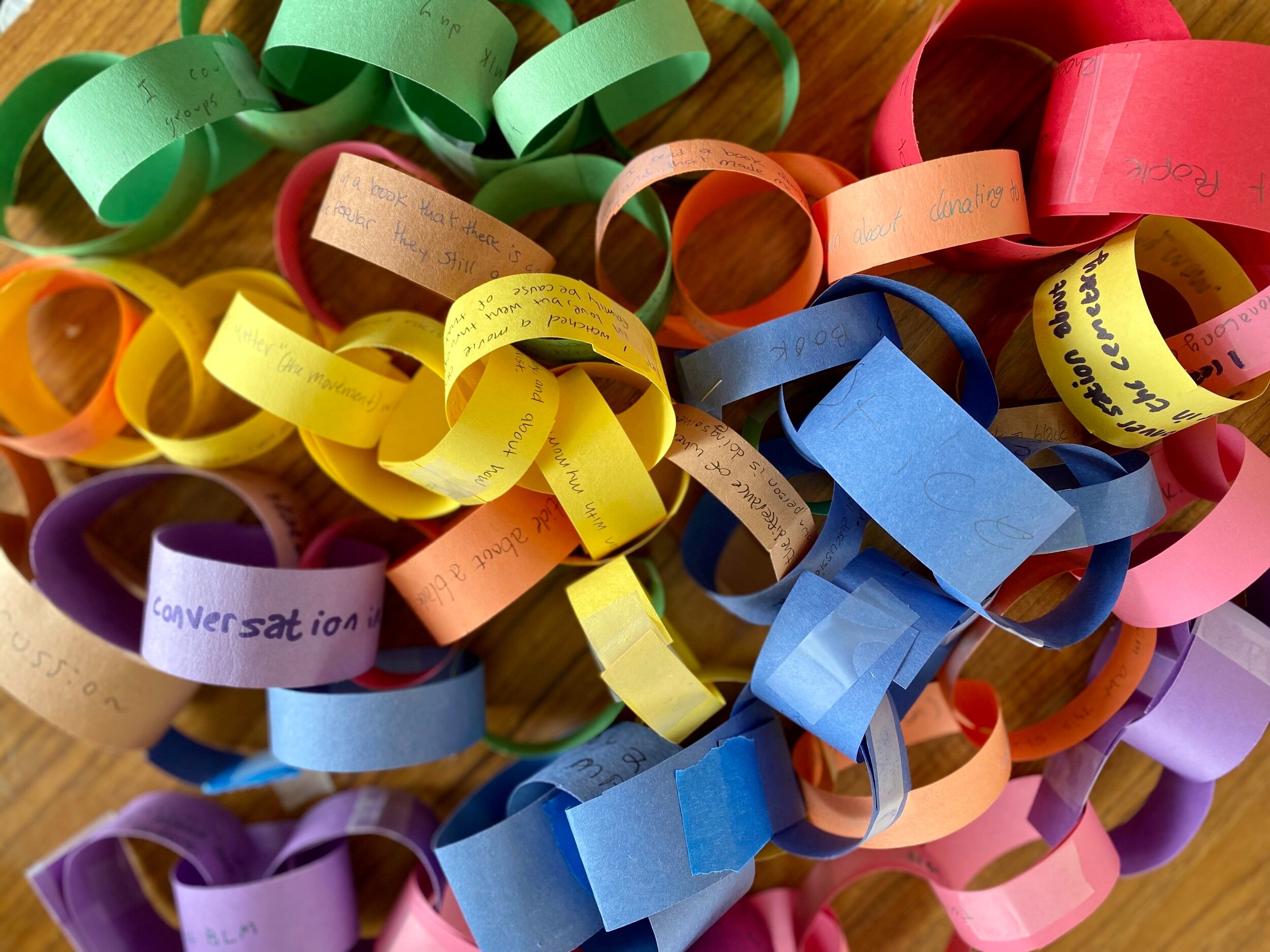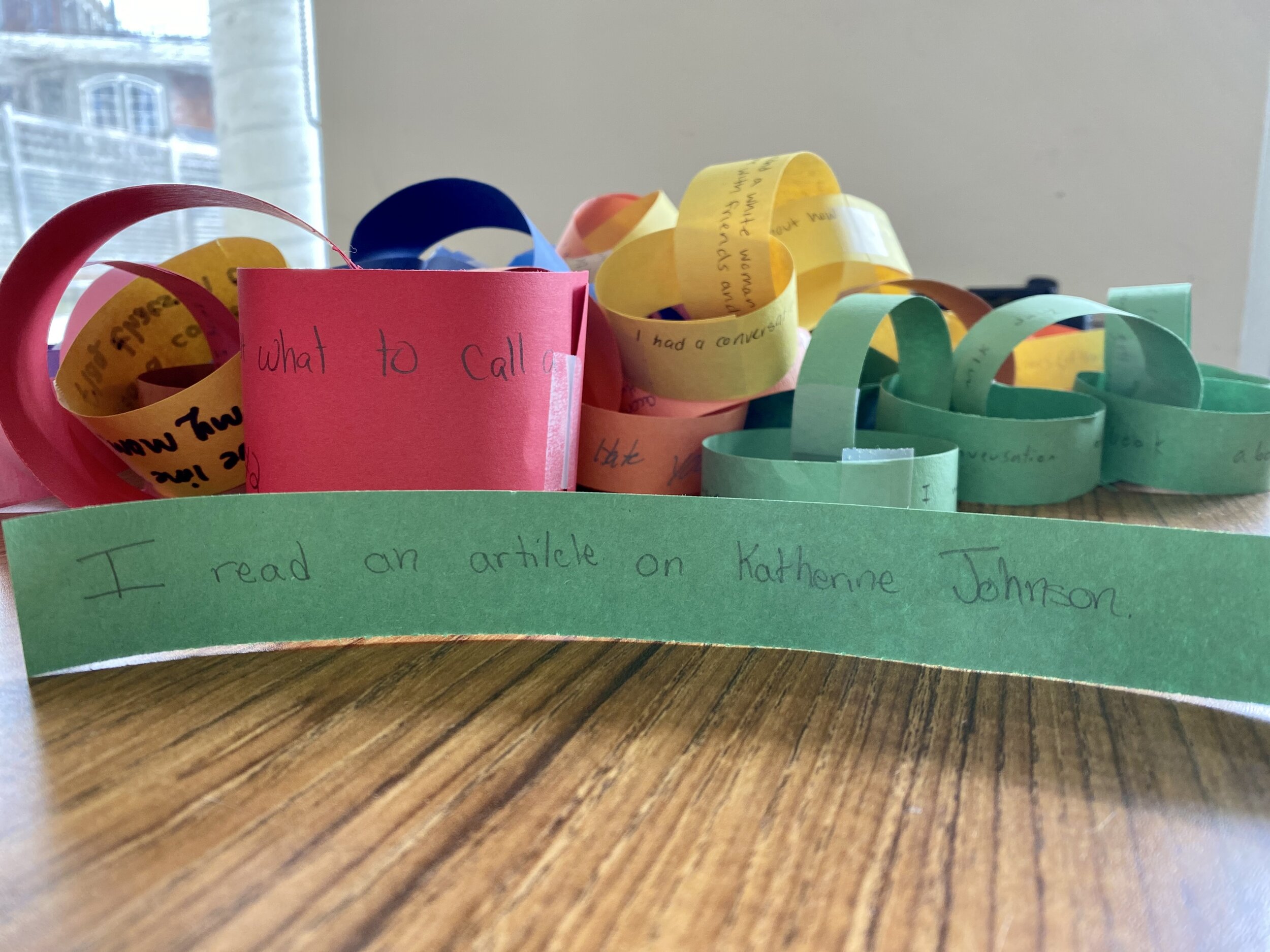21 Days of Habit Building for Racial Equity
GUS Teachers reflect on the community-wide effort to build racial equity habits in the classroom.
In January, GUS launched a community-wide 21-day racial equity habit building challenge. The racial equity challenge was developed by Eddie Moore, Jr., an education leader and diversity practitioner, with the goal of “creating effective social justice habits, particularly those dealing with issues of power, privilege, supremacy and leadership”. The challenge is simple: for 21 days, each day, you commit to doing one action to further your understanding of power, privilege, supremacy, oppression, and equity. Over the last few weeks, GUS faculty and students have all been involved in this challenge in different ways. Below, members of the DEI Task Force share some of what they’ve been exploring with their students in Pre-K, Kindergarten, first grade, fourth grade, sixth grade, and eighth grade.
Janelle Young, Pre-K
In Pre-K, identity, social, and racial awareness starts by celebrating all the wonderful things we know about ourselves and others. From impromptu moments on our meeting rug sharing family photos, to more formal conversations during class meetings, we’ve taken time to reflect on who we are as individuals and as citizens of the world. We always have a selection of diverse books on our shelves that allow students to draw connections between book characters and themselves, while also having a window into experiences, cultures, and people who may be different from them. Through recent read-alouds we learned about skin pigment and talked about how melanin and our ancestors affect our skin colors. We then mixed our own unique skin color shades using primary paint colors. It’s been great to see students independently read, re-read, and continue talking with friends about some of the books we’ve used as a springboard to our conversations, including Every Night is Pizza Night, Sulwe, and Happy in Our Skin. As we continued to think about our physical characteristics, we took inspiration from The Crown: An Ode to the Fresh Cut, and matched and recreated our own hair with modeling clay, noticing things like “my hair is lots of colors,” and “my hair looks flat, so I’m smooshing it like a pancake.”
When learning about Dr. Martin Luther King Jr., Pre-K students were particularly interested in the line “the content of their character,” from his “I Have A Dream” speech. We asked ourselves: what does character mean? To go beyond physical characteristics, and learn more about the meaning of “character,” we are identifying characteristics we have ‘inside’ our bodies. We talked about the emotions in “our hearts,” such as “excited,” “sad,” “happy,” and “lots of feelings”. We composed a class poem inspired by I Am Every Good Thing, that described our most favorite things, such as “playing together,” “taking care of animals,” and “being a scientist”. As a culminating project, we are creating a mural using all the elements of ourselves to celebrate what is special and unique about our community.
Sandra Thoms, Kindergarten
In Kindergarten, we began with our similarities and differences. We talked about being friends with people who are like us in some ways and different from us in others. Must you always agree with your friends? How can you handle disagreements? Can you be friends with people who sometimes have different ideas than you, who look different than you, who like different activities? As in Pre-K, we also learned about our skin colors, and did an “egg experiment” to illustrate how we can look differently on the outside, but be the same on the inside.
Kindergartners then learned about the lives of Abraham Lincoln, Rosa Parks, Dr. Martin Luther King Jr., Wilma Rudolf, Ruby Bridges, and Amanda Gorman. Children learned about the Civil Rights Movement and current anti-racism work at a developmentally appropriate level. Through videos, slide presentations, and stories, students talked about the lives of these individuals, and their contributions and determination, as well as learning about the movements they shaped. There were many excellent questions and lively discussions on these topics that inspired Kindergarteners to think about what they can do to make a difference. Kindergartners have decided to take action to help make the world around them fairer for all by having a march, holding up signs and giving speeches to teach about fairness. Stay tuned for a video of their march!
Amy Billings, Grade 1
First graders created poems and drawing inspired by Civil Rights leaders.
In the lead-up to Black History Month, first graders have been learning about Black leaders and changemakers, including Rosa Parks, Dr. Martin Luther King Jr., Ruby Bridges, Jackie Robinson, John Lewis, Frederick Douglass, and Harriet Tubman (just to name a few). We watched a PBS Kids Talk about Race and Racism, hosted by Amanda Gorman, which opened up a broader conversation about what we know and still need to learn about race and racism. As part of these conversations, we have begun to learn about slavery and colonialism. The students struggle to understand why anyone would want to own another person, and have asked why people were enslaved, and why they weren’t able to escape. The more conversations we have had about the Underground Railroad and the journey of former enslaved people like Harriet Tubman and Frederick Douglass, the more students have come to understand that slavery wasn’t a choice, and that enslaved people were prevented from leaving and denied the freedom and privileges of white people.
Another powerful conversation we had in first grade, while talking about the Civil Rights Movement, was about white privilege. Some of the questions we posed were, What is white privilege? What did it mean to be white in America in the 60’s? What did it mean to be Black? How has that changed today and how hasn’t it changed? One student commented that since he was white, he would have been fine and did not have to worry. He also realized he may not have been able to play with any of his friends who have darker skin than him. Another student asked if that was fair? After our discussions, we were left to ponder this question: Is it fair for white people to not have to worry, and is it fair that Black people do? These are big questions for first graders, and we are continuously impressed with their ongoing interest in and engagement with these topics.
Laura Doyle, Grade 4
A fourth grade student logs into a daily habit tracker as part of a 21-day racial equity challenge.
As a fourth-grade teacher, as a GUS parent of a kindergartener and a second grader, and as a member of the DEI Task Force, I felt pretty invested in the 21-Day racial equity habit building challenge. Each student in 4th grade has been filling out their own habit-building tracker for their daily action, which may be noticing and reflecting, reading, listening to, or watching something that builds their understanding of power, privilege, supremacy, oppression, and equity. One important goal of ours as teachers has been to build the students’ racial literacy. For example, we have talked in class about the definitions of prejudice and discrimination and practiced recognizing examples of both. We discussed how remembering the definition of the word prejudice is similar to learning the steps of long division or using non-fiction reading strategies. It’s really important to remember!
While we don’t always have answers to the fourth graders’ questions, we love their enthusiasm for learning - we’ve seen it since the beginning of the year when they came to school talking about the injustice of George Floyd’s killing, and we know they will bring this energy into the spring, building up their racial literacy so they can become stronger GUS and world citizens.
Bre Brandt, School Counselor + Grade 6 Life Skills
In sixth grade life skills class, the students have recorded their acts of social awareness onto a colored ring of construction paper. We are currently in the process of connecting each ring in an effort to create a tangible representation of a united effort to create space for social justice in our day-to-day lives. Some examples of these acts include reading The Hate you Give, having conversations around race more openly with parents, and recognizing one’s own prejudices in order to perpetuate change not shame.
Julie Wyman, Upper School Math + Grade 8 Homeroom
In Eighth Grade homeroom, students have had a number of mini-lessons highlighting Black history as American history. Some highlights include watching a video of young descendants of Frederick Douglass read excerpts from his speech on July 4th, 2020, “What to the Slave Is the Fourth of July?” (July 5, 1852), and learning about the 13th amendment (Feb 1, 1865) to understand the loophole that led to Jim Crow, convict leasing and mass incarceration. We also learned about The Great Migration (1910-1970), the movement of over 6 million Black Americans leaving the South to find opportunity in the North over a period of 6 decades, and about some of the important individuals whose families were part of the Great Migration: James Earl Jones, Jackie Robinson, Malcolm X, Ella Baker. We learned about poet Audre Lorde on February 18th, who was featured on Google to celebrate her 87th birthday. A self-described "Black, lesbian, mother, warrior, poet," she dedicated both her life and her creative talent to confronting and addressing injustices of racism, sexism, classism, capitalism, heterosexism, and homophobia.
If you haven’t yet participated in the 21-day racial equity habit building challenge, we hope you find inspiration and encouragement in the work of our students and faculty. If they can do it, so can you! Read more about the challenge at Eddie Moore Jr.’s website, sign up to have a daily action emailed to you via ProHabits, or get started by exploring the many articles, podcasts, videos, and websites we’ve gathered at the DEI Resources page on the GUS website. Head of School Gretchen Forsyth, who has also been doing the 21-day racial equity habit building challenge, shared her own thoughts.“What I learned from the 21 day challenge is that this work should become part of our routine, like brushing our teeth. Starting my day with an article or video really helped me to see more of my day through a DEI lens. The information stayed with me and inspired me to find new ways to bring these themes and messages into our world here at GUS. I am signing up again!”

